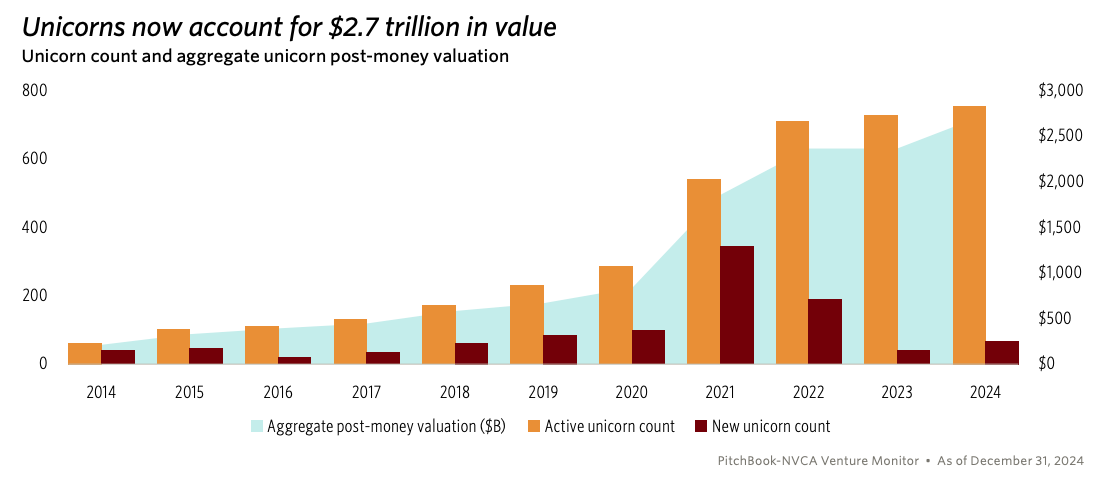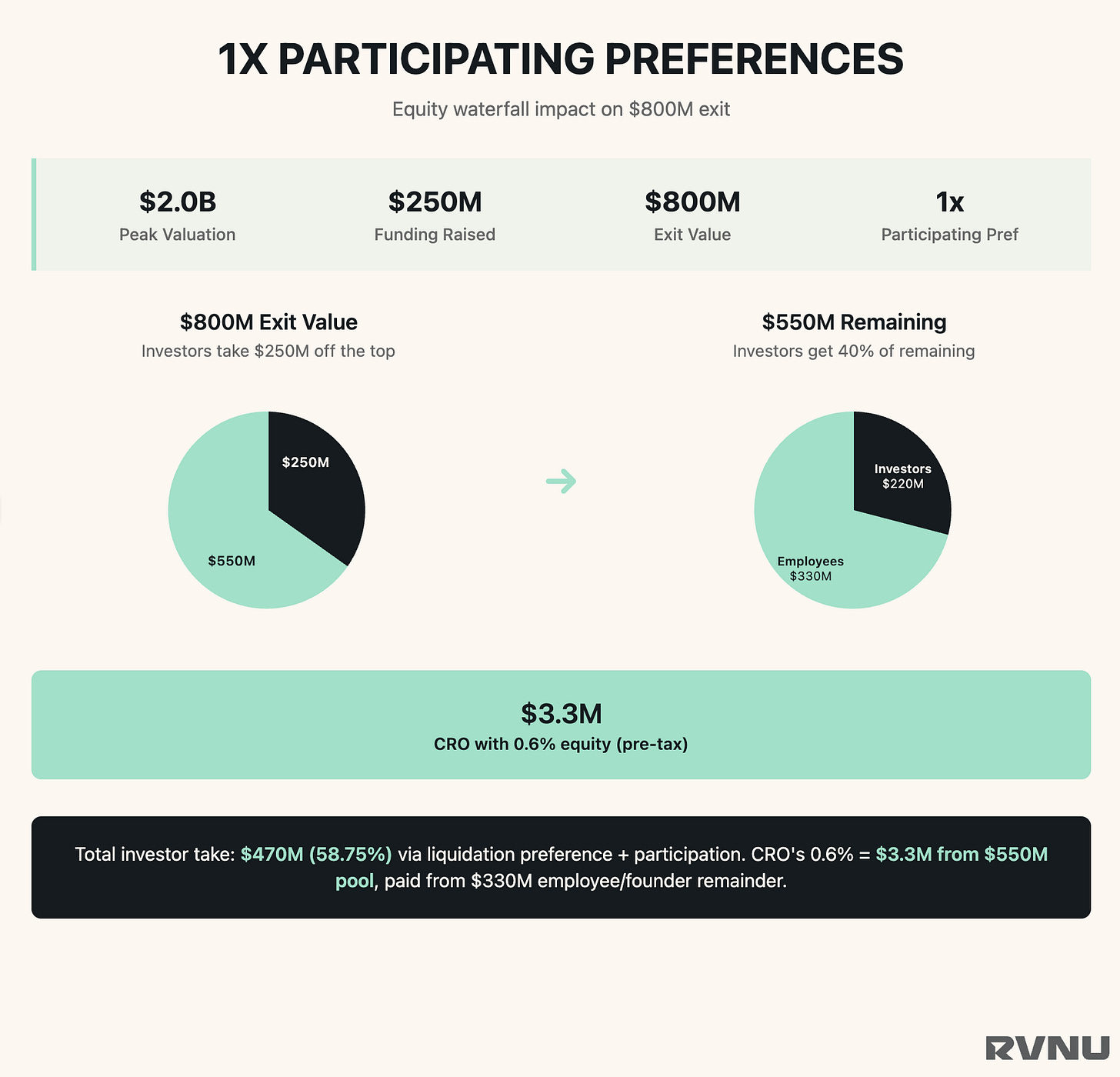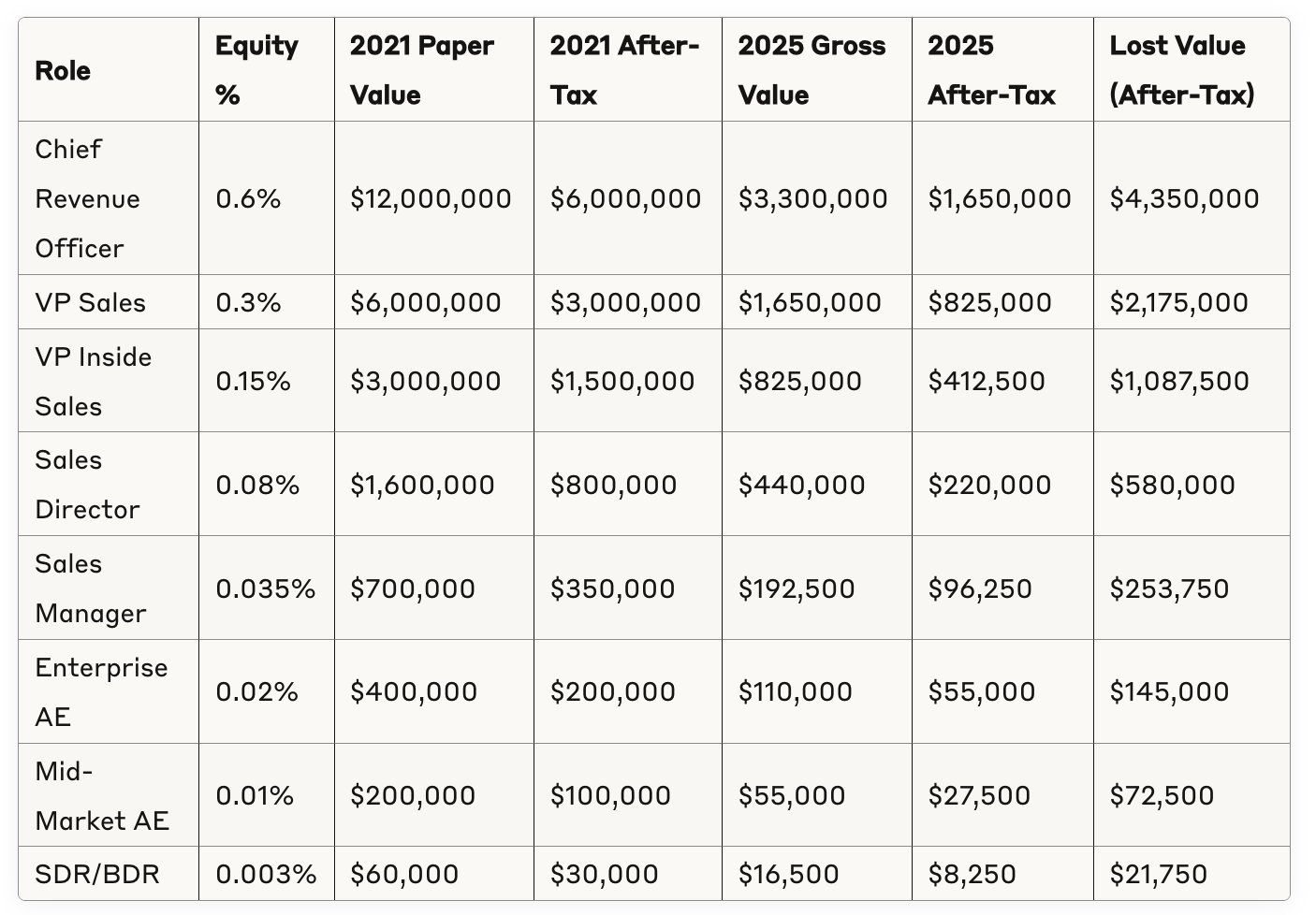RVNU #033: The Zombie Unicorn Reality Check
How liquidation preferences and valuation compression are crushing employee equity dreams—and what to do about it
Psst:… Looking for the RVNU Startup MBA? 👀 Lectures are every other week right here. Sign up to the paid newsletter for access. Lecture 2 is out next Tuesday! Here’s lecture 1 in case you missed it.
NOTE: I updated this article post-publish to re-work the math. Feedback on accuracy of math always welcome. Thanks for the support there 👊🏼
The Zombie Unicorn Equity Trap: Why Your Options Are Worth Less Than You Think
They told you that 0.1% was life-changing. Let's see what that really means in 2025.
The term "unicorn" gets tossed around easily these days. Since 2021, over 1,200 companies have reportedly hit the $1B valuation mark, according to ChatGPT; PitchBook/NVCA place the number closer to 800. Regardless of the count, one thing is clear: many of those companies aren't actually creating liquidity—or wealth—for their employees.
Why? Because IPOs and M&A exits have slowed dramatically, and when exits do happen, they often fall far below peak valuations. Add investor-friendly terms like participating preferred stock, and employee equity can become close to worthless.
Let's break down how this happens—and what it means for you.
The Setup: A Typical Zombie Unicorn
Let's meet a hypothetical (but very common) example:
Total funding raised: $250M across multiple rounds
2021 peak valuation: $2B
2025 realistic exit: $800M
Capital structure: 1x participating liquidation preferences
That last one is key. It means investors get their money back plus a proportional share of the remaining value.
What Is Participating Preferred?
Before we go further, a quick primer:
Non-Participating Preferred (most common): Investors choose either their 1x investment back or convert to common equity—whichever is worth more.
Participating Preferred (investor-friendly): Investors get both their money back and their pro-rata share of the rest. This is called a "double-dip."
Distribution Math That Changes Everything
Let's assume our $800M exit plays out like this:
Step 1: Liquidation Preference First
Investors get back their $250M (1x pref) off the top
Remaining equity pool: $550M
Step 2: The "Double Dip" Happens
Investors still own 40% of the company's equity (even after getting their $250M back)
So they also get 40% of the remaining $550M = $220M more
Total to investors: $250M + $220M = $470M
Left for everyone else: $330M
Step 3: How the $330M Gets Split
Founders typically own ~20% of total company = 20% of $550M = $110M
Employee pool typically owns ~10% of total company = 10% of $550M = $55M
But remember: They're taking from the $330M leftover, not the full $550M
The Key Math:
CRO with 0.6% gets: 0.6% × $550M = $3.3M gross
But this comes from the $330M employee/founder pool
Employee pool (10% of company) gets $55M total to split among everyone
Individual employees get their percentage of the $330M remaining after investors take their double-dip
Critical Point: Your equity percentage applies to the $550M pool, but investors take both their liquidation preference AND their equity share, leaving much less actual money for employees and founders to split.
Here’s a neat visual of how 1x participating breaks down in this example:
The Sales Team Equity Breakdown: 2021 vs. 2025
Let's apply this to a typical sales org. Here's what their equity looked like during the 2021 peak—and what it's actually worth in a 2025 exit scenario.
These numbers show how equity paper dreams from 2021 often turn into hard 2025 realities—especially for ICs and managers.
Strategic Framework: What You Should Do
C-Level (Meaningful Money Still Exists)
Stay put and maximize equity outcomes
Negotiate retention grants or refreshers
Use time to build acquisition relationships
Management (Tough Calls)
Evaluate total comp vs earlier-stage opportunities
Document turnaround success for your resume
Target roles with 0.1–0.5% equity in $100–500M startups
Individual Contributors (It's Time to Move)
Your equity is likely worth <$30K post-tax
Focus on cash comp and skill development
Target Series A/B companies where 0.01–0.1% equity could 10X your upside
Universal Advice: Extract Maximum Value While You Can
Skill Development
Revenue efficiency
Unit economics
Crisis management
Networking
Build relationships with acquirers and investors
Stay close to earlier-stage founders
Resume Positioning
"Led sales ops through $X in cost reductions"
"Managed team through liquidity-prep process"
The Bottom Line
Every person in this org lost 70%+ of their expected equity value since 2021—but your response should match your role:
C-Level: Stay, lead, and land the outcome
Managers: Evaluate wisely and position yourself
ICs: Get out before the next round wipes you further, or stick around and learn!
Why We Built RVNU
We help SaaS founders optimize their go-to-market engine early so their companies (and teams) don't get stuck in equity quicksand. Our GTM Debt assessment and $20M Roadmap give founders a structured path to sustainable growth, better valuations—and equity that actually pays off.
Want to know if you're sitting on zombie equity? Take the free $20M Roadmap assessment and find out.
Wayne Morris
Founder & CEO, RVNU
Source: Analysis based on Bill Gurley's zombie unicorn data from Invest Like the Best podcast, with RVNU calculations for equity distribution and California tax implications.
The RVNU Newsletter is a reader-supported publication. To receive new posts and support my work, consider becoming a free or paid subscriber.
Looking for the RVNU Startup MBA? Lectures are every other week. Sign up to the paid newsletter for access. Lecture 2 is out next Tuesday! Here’s lecture 1 for those that missed it.






